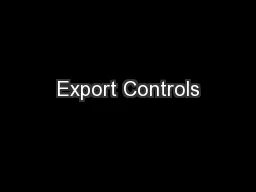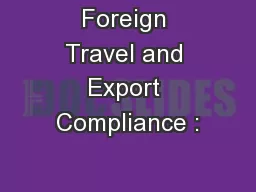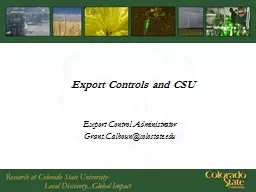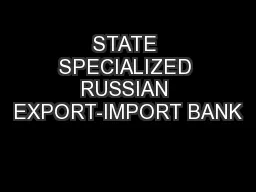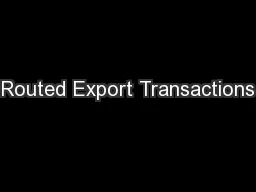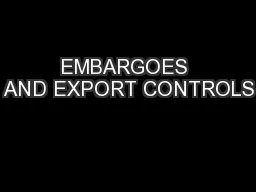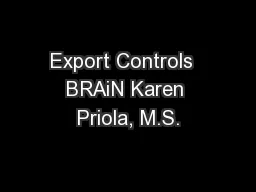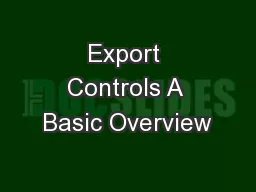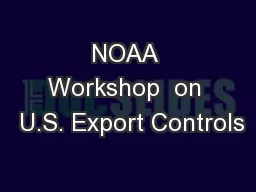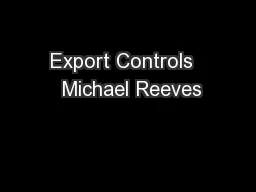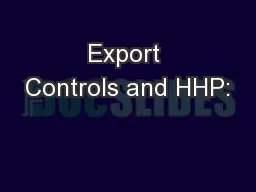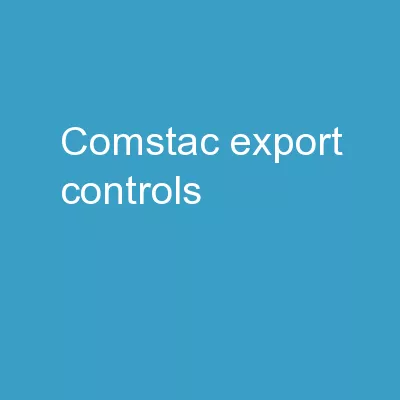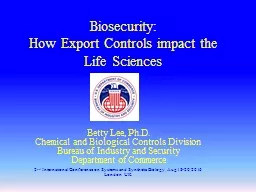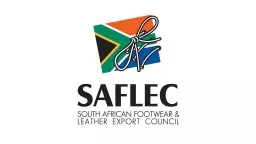PPT-Export Controls
Author : luanne-stotts | Published Date : 2016-04-10
UH Office of Export Controls OEC 1 2008 Executive Policy E5218 was promulgated OTTED once handled export controls 2011 OEC was established by the former Vice
Presentation Embed Code
Download Presentation
Download Presentation The PPT/PDF document "Export Controls" is the property of its rightful owner. Permission is granted to download and print the materials on this website for personal, non-commercial use only, and to display it on your personal computer provided you do not modify the materials and that you retain all copyright notices contained in the materials. By downloading content from our website, you accept the terms of this agreement.
Export Controls: Transcript
Download Rules Of Document
"Export Controls"The content belongs to its owner. You may download and print it for personal use, without modification, and keep all copyright notices. By downloading, you agree to these terms.
Related Documents

